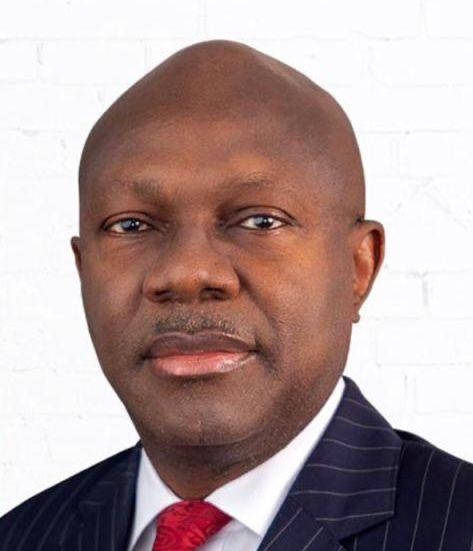Revealed: Africa's $4 trillion investable capital and the call to power a new industrial era
Africa is sitting on a financial goldmine of over $4 trillion in investable capital, yet the continent continues to grapple with underdeveloped infrastructure and industrial gaps. This paradox is at the heart of the newly released 2025 State of Africa’s Infrastructure (SAI) Report by the Africa Finance Corporation (AFC), which paints the most comprehensive picture yet of Africa’s untapped domestic investment potential.
The report uncovers $1.1 trillion in long-term institutional capital from pensions, insurance firms, sovereign wealth funds, and public development banks. In addition, it accounts for $2.5 trillion in commercial banking assets and $470 billion in central bank reserves.
Despite the sheer scale of these funds, the majority remain tied up in short-term, low-risk financial instruments, rather than being channeled into the real economy where they could catalyse transformation.
According to the AFC, Africa does not lack capital. What is missing is a coordinated effort to mobilise and deploy that capital into long-term development, particularly in infrastructure sectors like energy, transport, and industrial production.
Perhaps the starkest revelation in the SAI Report lies in the energy sector. In 2024, Africa added just 6.5 gigawatts of grid-connected capacity across all sources. In comparison, India—a fellow developing economy—added 18GW from renewables alone in the same year.
Installed power generation per capita in Africa has stagnated over the last decade, while India has more than doubled its output per person since 2008. This widening gap in energy access has far-reaching implications for Africa’s ability to industrialise, digitise, and build climate resilience.
AFC is urging a shift in narrative—from small-scale electricity access to building large-scale, interconnected power systems that can anchor industrial growth. The report also highlights the urgent need for regional grid integration and private sector participation in transmission, noting that Africa still lacks a single independently-financed electricity transmission project.
The potential for cross-border electricity trade remains high. AFC identifies Angola, Democratic Republic of Congo, Tanzania, and Mauritania as key players that can enable regional power flows—by leveraging their generation surpluses to support neighbouring countries with deficits.
While the energy picture remains challenging, there are signs of renewed momentum in Africa’s transport infrastructure, particularly in the rail sector. According to the report, more than 7,000 kilometres of new railway lines are either under construction or in the pipeline—an expansion that could potentially double the pace of rail development in the coming decade.
To support this revival, AFC has launched the first-ever Digital Map of African Railways. This interactive tool offers real-time insights into existing and planned corridors, aiming to boost visibility for investors and promote cross-border infrastructure coordination.
This is a significant leap for a continent where the decline of railways in the post-independence era hampered intra-African trade and logistics efficiency. If implemented successfully, the rail renaissance could be instrumental in unlocking trade corridors, reducing logistics costs, and linking remote production areas to regional markets.
: AFC backs Mota-Engil with over $100M to power gold mining in Mali, Côte d’Ivoire
Africa imports over $300 billion worth of industrial inputs annually—primarily steel, fertilizers, and refined petroleum. These inputs are vital to industrial and agricultural development, yet local production remains woefully inadequate.
For instance, Africa’s steel consumption averages just 24kg per capita, compared to the global average of 219kg. Fertilizer use is similarly low, with only 23kg per hectare applied in Africa, versus 140kg globally.
AFC identifies the ore-to-steel supply chain as a prime candidate for transformation. With vast iron ore reserves in West Africa, the report calls for investment in infrastructure to connect these supply centres to processing hubs and consumer markets across the continent. This value addition could dramatically reduce Africa’s import dependence, while creating jobs and enhancing industrial self-sufficiency.
While the report acknowledges the challenges, it is ultimately a call to action. AFC outlines a practical roadmap that includes:
AFC President and CEO, Samaila Zubairu, put it succinctly: “This report provides a practical roadmap for how Africa can channel its significant financial strength into the infrastructure needed to drive industrial transformation—from scaling electricity supply to revitalising rail and building up strategic industries like steel and fertilisers. The tools exist. The capital is available. What’s needed now is coordinated action to unlock it.”
The 2025 State of Africa’s Infrastructure Report leaves no doubt—Africa’s greatest asset is not only its resources or population, but its growing financial muscle. With over $4 trillion in investable capital, the continent holds the keys to its own transformation.
What remains is the will and coordination to deploy this capital in ways that unlock sustainable growth, drive industrialisation, and place African-led solutions at the forefront of development.










